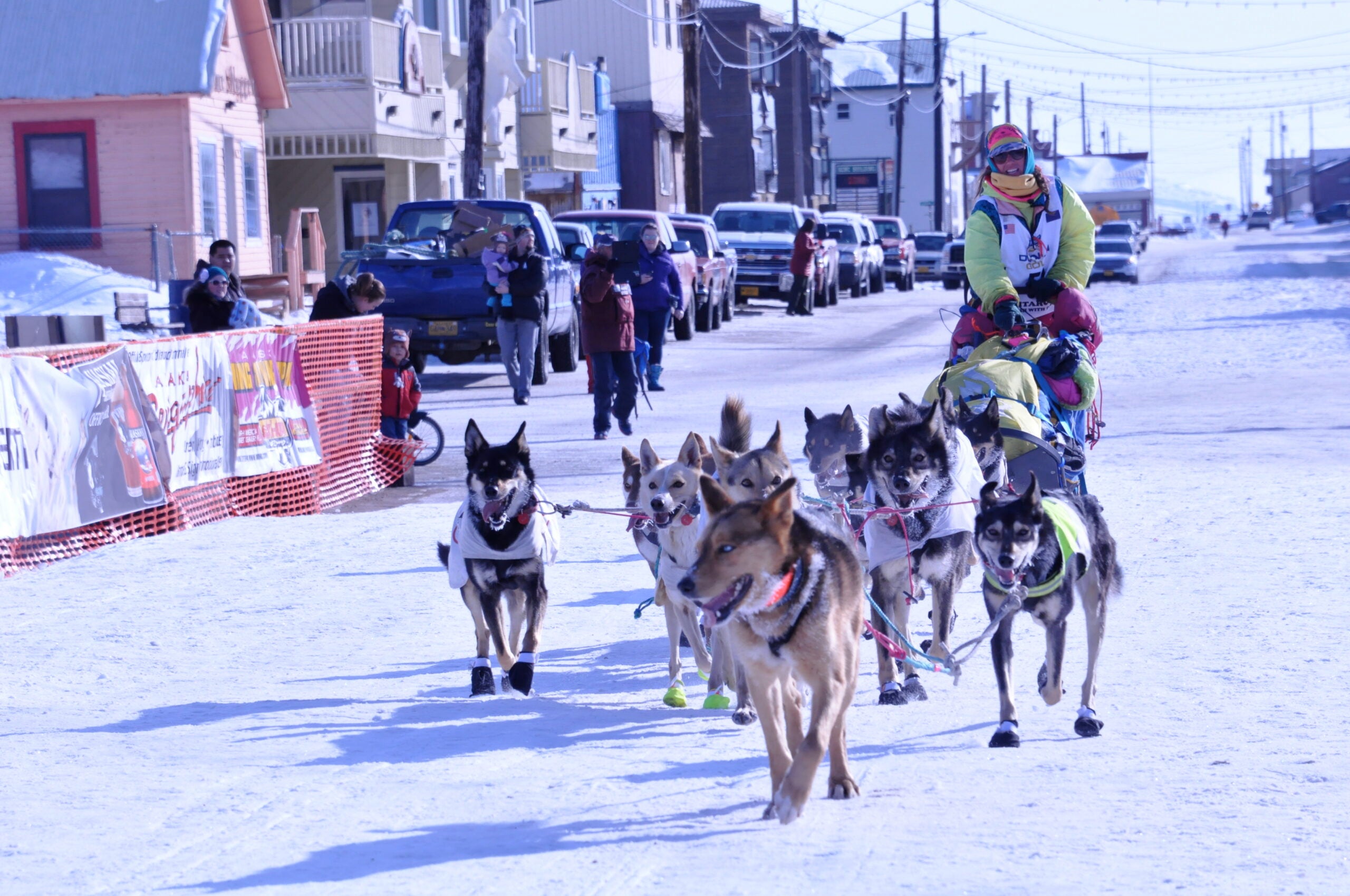Earthjustice stands with western Alaska tribes and families after severe storms devastated entire communities, displacing more than 1,000 residents just before winter. Learn more and how you can help.
Protecting the ‘Wilderness Mystique’ of Alaska’s Iditarod Trail
Donlin Gold’s proposed natural gas pipeline threatens the Iditarod’s most cherished quality—its wilderness mystique.

This page was published 9 years ago. Find the latest on Earthjustice’s work.
This is a guest blog post by Monica Zappa. Zappa is a three-time Iditarod finisher and holds an M.S. in geography from Northern Illinois University. Before moving to Alaska, she worked as a research assistant for hazard and disaster studies at the National Weather Center in Oklahoma. Her parents were also mushers.
Don Bowers, Iditarod musher, Hall of Famer and author of Back of the Pack, arguably the best account of the Iditarod Trail in print today, truly loved the mystique of the Iditarod. Bowers’ love for the unspoiled wilderness that he found on the Iditarod Trail inspired him to promote and protect the trail until his untimely death in 2000. In Back of the Pack, he detailed his pilgrimage to Nome as an Iditarod rookie musher. His love of the trail educates and motivates all who read his book, from rookies preparing for their first trips down the trail to race fans who will likely never see it—just knowing it exists is enough to fuel their lust for adventure.
But now, a natural gas pipeline to power a proposed mine could alter and tame the Iditarod Trail on an unprecedented scale. Donlin Gold is planning a 315-mile pipeline across wild and mountainous terrain, paralleling the trail for nearly 60 miles and crossing it 13 times. A bumpy, barely-wide-enough-to-fit-a-sled trail would become a 150-foot-wide corridor capable of accommodating trucks and heavy equipment. If a natural gas pipeline is built right through the middle of some of Alaska’s wildest, most untamed and untouched wilderness, can the Iditarod’s mystique survive? And can the race survive when fans learn that one of the most challenging parts of the trail, the Happy River Steps, has been dramatically altered so that a giant, foreign-owned gold mine has a power supply in remote Alaska? I’m not sure.
It is the synergy of diehard race fans and mushers that truly makes the Iditarod the Last Great Race. When March comes, ripples of excitement are felt around the world, fueled by the fans’ unquenchable thirst for knowledge. Everyone wants to know about the trail, the mushers, the dogs and the weather. The remoteness of the entire 1,049 miles of trail is remarkable in itself. The fact that such a large space still exists in the United States, uninterrupted by a through road, is something few Americans can imagine.
The inaccessibility also makes it impossible for anyone to really know what happens out there besides the mushers themselves. For almost two weeks, friends, family and fans wonder, speculate, watch trackers and get pieces of the puzzle through the media and insider reports. The only thing they do know is that it takes guts and gumption to brave the trek across the Alaskan wilderness by dog team. That harsh, cold, cruel wilderness, virtually untouched by human development, is one reason that merely making it to Nome automatically promotes the musher to hero status.
As a musher, the impact of a pipeline buried beneath my feet would be heartbreaking. In 2014, I too was a rookie on my first pilgrimage to Nome. Like Bowers, I had a scary, crazy and rewarding trip. If none of the future rookies were able to experience the trail as we did, I would be very sad for them and nostalgic for the rugged trail I once knew. Once the trail is cleared 150 feet wide, a construction road is cut into the Happy River Steps, 5,000-foot airstrips are built and bulldozers carve a 315-mile road across ground that has never seen anything bigger than a snow machine, there is no doubt that the wilderness will be less wild. Suddenly, it’s a whole new race. The question will be soon be, did you run the Iditarod B.P. (before pipeline)?
One Iditarod fan who commented on Donlin Gold’s environmental impact statement says frankly, “Keeping wildness in our country is of the utmost importance for all of us, whether we ever see that wildness or not. Teddy Roosevelt got it right.” President Theodore Roosevelt dedicated himself to the conservation of public lands, just as Joe Redington Sr. created the Iditarod race to preserve Alaska’s mushing heritage. Ansel Adams and other great nature photographers helped build the wilderness mystique through their pictures. Today, as an Iditarod musher, I share my stories and experiences with the world, helping the wilderness mystique survive. One day, I hope to join Bowers in writing a book about the magic of the Alaskan wilderness. To do that, I need the wilderness to survive—which is why I’m against the Donlin Gold pipeline.
Earthjustice submitted comments on the Donlin Gold project’s draft environmental impact statement on behalf of several conservation groups in May.
Opened in 1978, our Alaska regional office works to safeguard public lands, waters, and wildlife from destructive oil and gas drilling, mining, and logging, and to protect the region's marine and coastal ecosystems.